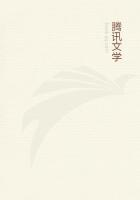"As regards the ducks, for example, inter-breeding goes on to a very great extent among nearly all the genera, which are well represented in the collection. We think it unfortunate that the details of these crosses have not hitherto been made public. The Zoological Society has existed about thirty-five years, and we imagine that evidence must have been accumulated almost enough to make or mar that part of Mr. Darwin's well-known argument which rests on what is known of the phenomena of hybridism. The present list reveals only one fact bearing on the subject, but that is a noteworthy one, for it completely overthrows the commonly accepted theory that the mixed offspring of different species are infertile inter se. At page 15(of the list of vertebrated animals living in the gardens of the Zoological Society of London, Longman and Co., 1862) we find enumerated three examples of hybrids between two perfectly distinct species, and even, according to modern classification, between two distinct genera of ducks, for three or four generations. There can be little doubt that a series of researches in this branch of experimental physiology, which might be carried on at no great loss, would place zoologists in a far better position with regard to a subject which is one of the most interesting if not one of the most important in natural history."I fear that both you and your readers will be dead sick of Darwin, but the above is worthy of notice. My compliments to the "Savoyard."Your obedient servant, May 17th. A. M.
DARWIN AMONG THE MACHINES
"Darwin Among the Machines" originally appeared in the Christ Church PRESS, 13 June, 1863. It was reprinted by Mr. Festing Jones in his edition of THE NOTE-BOOKS OF SAMUEL BUTLER (Fifield, London, 1912, Kennerley, New York), with a prefatory note pointing out its connection with the genesis of EREWHON, to which readers desirous of further information may be referred.
[To the Editor of the Press, Christchurch, New Zealand, 13 June, 1863.]
Sir--There are few things of which the present generation is more justly proud than of the wonderful improvements which are daily taking place in all sorts of mechanical appliances. And indeed it is matter for great congratulation on many grounds. It is unnecessary to mention these here, for they are sufficiently obvious; our present business lies with considerations which may somewhat tend to humble our pride and to make us think seriously of the future prospects of the human race. If we revert to the earliest primordial types of mechanical life, to the lever, the wedge, the inclined plane, the screw and the pulley, or (for analogy would lead us one step further)to that one primordial type from which all the mechanical kingdom has been developed, we mean to the lever itself, and if we then examine the machinery of the Great Eastern, we find ourselves almost awestruck at the vast development of the mechanical world, at the gigantic strides with which it has advanced in comparison with the slow progress of the animal and vegetable kingdom. We shall find it impossible to refrain from asking ourselves what the end of this mighty movement is to be. In what direction is it tending? What will be its upshot? To give a few imperfect hints towards a solution of these questions is the object of the present letter.
We have used the words "mechanical life," "the mechanical kingdom,""the mechanical world" and so forth, and we have done so advisedly, for as the vegetable kingdom was slowly developed from the mineral, and as in like manner the animal supervened upon the vegetable, so now in these last few ages an entirely new kingdom has sprung up, of which we as yet have only seen what will one day be considered the antediluvian prototypes of the race.
We regret deeply that our knowledge both of natural history and of machinery is too small to enable us to undertake the gigantic task of classifying machines into the genera and sub-genera, species, varieties and sub-varieties, and so forth, of tracing the connecting links between machines of widely different characters, of pointing out how subservience to the use of man has played that part among machines which natural selection has performed in the animal and vegetable kingdoms, of pointing out rudimentary organs which exist in some few machines, feebly developed and perfectly useless, yet serving to mark descent from some ancestral type which has either perished or been modified into some new phase of mechanical existence. We can only point out this field for investigation; it must be followed by others whose education and talents have been of a much higher order than any which we can lay claim to.
Some few hints we have determined to venture upon, though we do so with the profoundest diffidence. Firstly, we would remark that as some of the lowest of the vertebrata attained a far greater size than has descended to their more highly organised living representatives, so a diminution in the size of machines has often attended their development and progress. Take the watch for instance. Examine the beautiful structure of the little animal, watch the intelligent play of the minute members which compose it; yet this little creature is but a development of the cumbrous clocks of the thirteenth century--it is no deterioration from them. The day may come when clocks, which certainly at the present day are not diminishing in bulk, may be entirely superseded by the universal use of watches, in which case clocks will become extinct like the earlier saurians, while the watch (whose tendency has for some years been rather to decrease in size than the contrary) will remain the only existing type of an extinct race.















